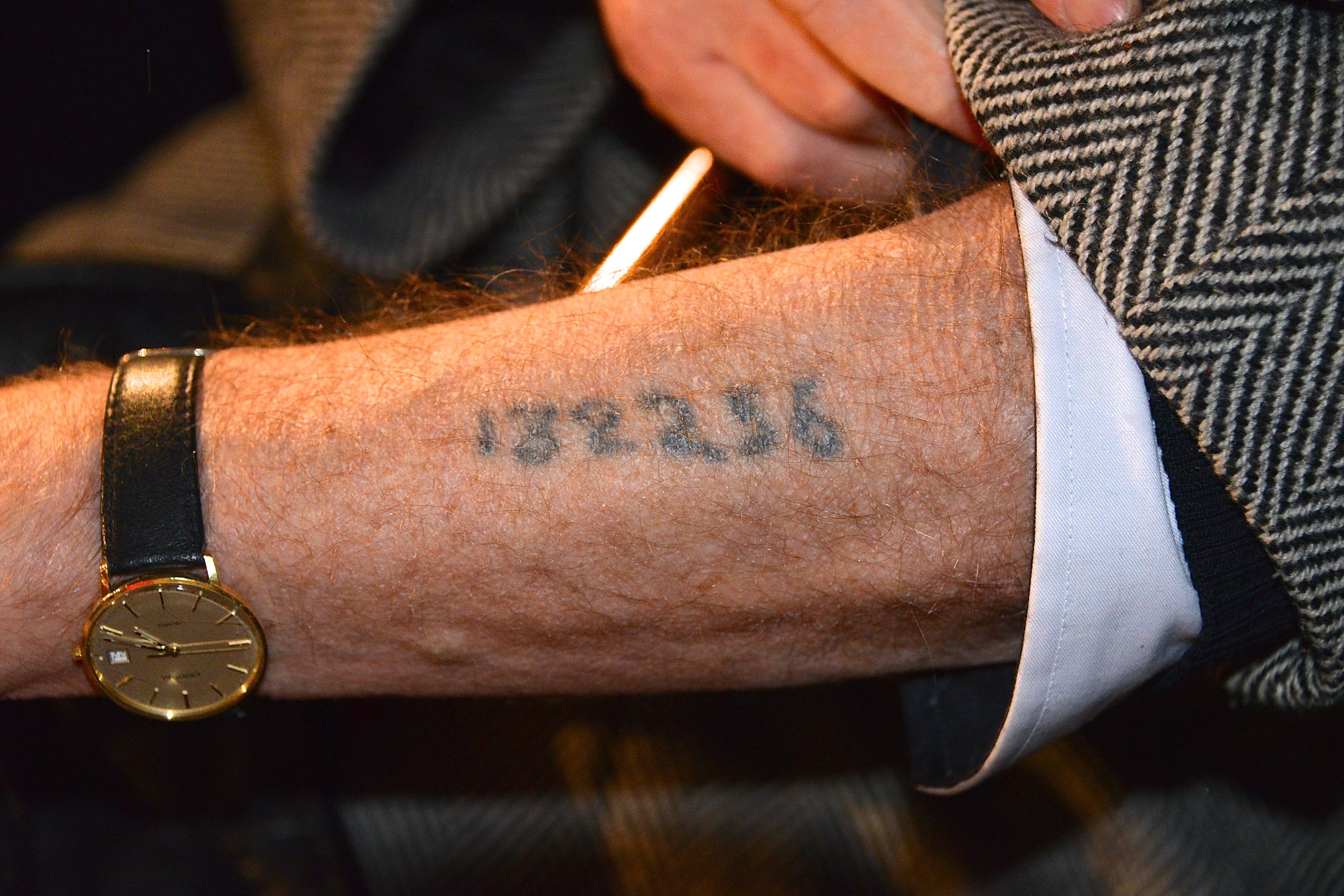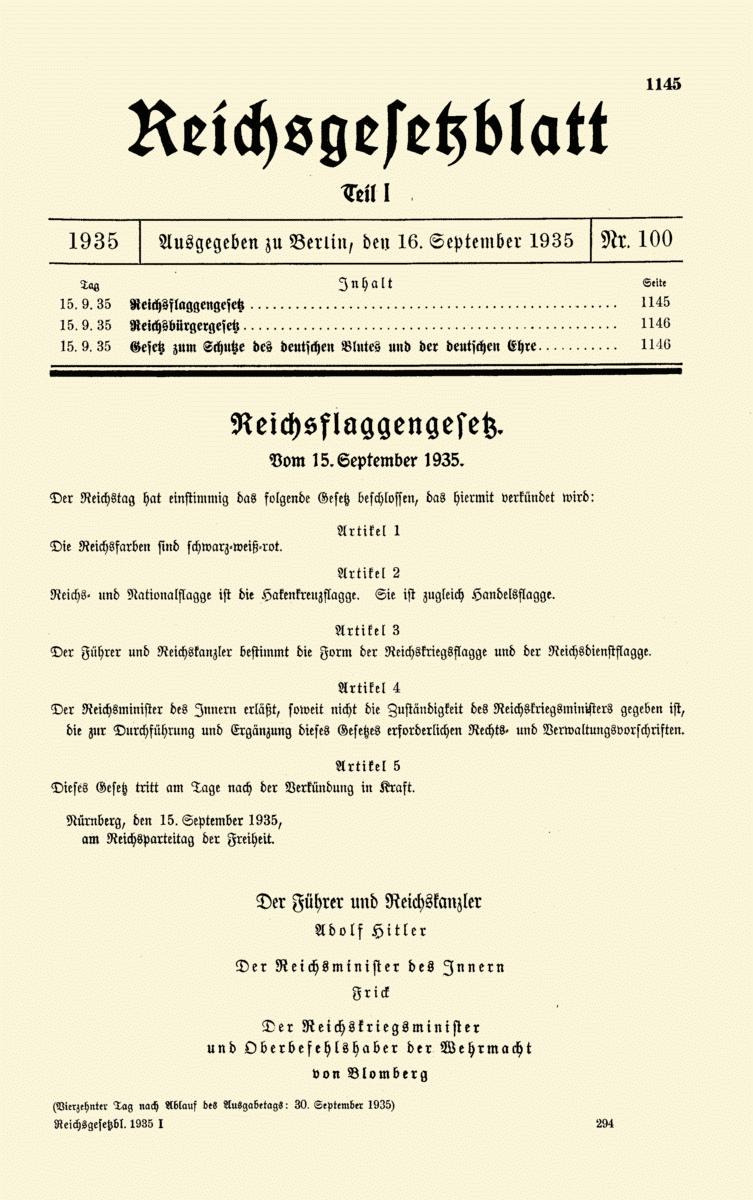|
Purple Triangle
The purple triangle was a concentration camp badge used by the Nazis to identify Jehovah's Witnesses in Nazi Germany. The purple triangle was introduced in July 1936 with other concentration camps such as those of Dachau and Buchenwald following in 1937 and 1938. In the winter of 1935–36, before the onset of the war, Jehovah’s Witnesses have been reported to make up 20–40% of the prisoners in concentration camps. Although Jehovah's Witnesses made up the vast majority of those wearing the purple triangle (over 99%), a few members of other small pacifist religious groups were also included. Background Jehovah's Witnesses came into conflict with the Nazi regime because they refused to use the Hitler salute, which conflicted with their beliefs. Because refusing to use the Hitler salute was considered a crime, they were arrested, and their children attending school were expelled, detained and separated from their families. When Germany made military enlistment mandatory, they we ... [...More Info...] [...Related Items...] OR: [Wikipedia] [Google] [Baidu] |
Persecution Of Jehovah's Witnesses In Nazi Germany
Jehovah's Witnesses suffered religious persecution in Nazi Germany between 1933 and 1945 after refusing to perform military service, join Nazi organizations, or give allegiance to the Hitler regime. An estimated 10,000 Witnesses—half of the number of members in Germany during that period—were imprisoned, including 2000 who were sent to Nazi concentration camps. An estimated 1200 died in custody, including 250 who were executed. They were the first Christian denomination banned by the Nazi government and the most extensively and intensively persecuted. Unlike Jews and Romani, who were persecuted on the basis of their ethnicity, Jehovah's Witnesses could escape persecution and personal harm by renouncing their religious beliefs by signing a document indicating renunciation of their faith, submission to state authority, and support of the German military. Historian Sybil Milton concludes that "their courage and defiance in the face of torture and death punctures the myth of a mo ... [...More Info...] [...Related Items...] OR: [Wikipedia] [Google] [Baidu] |
Persecution Of Jehovah's Witnesses
The beliefs and practices of Jehovah's Witnesses have engendered controversy throughout their history. Consequently, the denomination has been opposed by local governments, communities, and religious groups. Many Christian denominations consider the interpretations and doctrines of Jehovah's Witnesses heretical, and some professors of religion have classified the denomination as a cult. According to law professor Archibald Cox, Jehovah's Witnesses in the United States were "the principal victims of religious persecution … they began to attract attention and provoke repression in the 1930s, when their proselytizing and numbers rapidly increased." At times, political and religious animosity against Jehovah's Witnesses has led to mob action and governmental repression in various countries including the United States, Canada and Nazi Germany. During World War II, Jehovah's Witnesses were targeted in the United States, Canada, and many other countries because they re ... [...More Info...] [...Related Items...] OR: [Wikipedia] [Google] [Baidu] |
Terminology Of Nazi Concentration Camps
Terminology is a group of specialized words and respective meanings in a particular field, and also the study of such terms and their use; the latter meaning is also known as terminology science. A ''term'' is a word, compound word, or multi-word expressions that in specific contexts is given specific meanings—these may deviate from the meanings the same words have in other contexts and in everyday language. Terminology is a discipline that studies, among other things, the development of such terms and their interrelationships within a specialized domain. Terminology differs from lexicography, as it involves the study of concepts, conceptual systems and their labels (''terms''), whereas lexicography studies words and their meanings. Terminology is a discipline that systematically studies the "labelling or designating of concepts" particular to one or more subject fields or domains of human activity. It does this through the research and analysis of terms in context for the pur ... [...More Info...] [...Related Items...] OR: [Wikipedia] [Google] [Baidu] |
The Watchtower
''The Watchtower Announcing Jehovah's Kingdom'' is an illustrated religious magazine, published by the Watch Tower Bible and Tract Society of Pennsylvania. Jehovah's Witnesses distribute ''The Watchtower—Public Edition'', along with its companion magazine, ''Awake!''. The Watch Tower Society reports circulation of 36.3 million per issue for ''The Watchtower—Public Edition'' in 419 languages, with one new issue produced annually. ''The Watchtower—Study Edition'', used at congregation meetings, is published monthly. History The magazine was started by Charles Taze Russell in July 1879 under the title ''Zion's Watch Tower and Herald of Christ's Presence''. According to its first issue, the magazine's original purpose was to draw attention to Russell's belief that people of the time were "living 'in the last days' 'the day of the Lord'—'the end' of the Gospel age," and that "the dawn of the 'new' age, are facts not only discernible by the close student of the Word, ... [...More Info...] [...Related Items...] OR: [Wikipedia] [Google] [Baidu] |
Judaism Today
Judaism ( he, ''Yahăḏūṯ'') is an Abrahamic, monotheistic, and ethnic religion comprising the collective religious, cultural, and legal tradition and civilization of the Jewish people. It has its roots as an organized religion in the Middle East during the Bronze Age. Modern Judaism evolved from Yahwism, the religion of ancient Israel and Judah, by the late 6th century BCE, and is thus considered to be one of the oldest monotheistic religions. Judaism is considered by religious Jews to be the expression of the covenant that God established with the Israelites, their ancestors. It encompasses a wide body of texts, practices, theological positions, and forms of organization. The Torah, as it is commonly understood by Jews, is part of the larger text known as the ''Tanakh''. The ''Tanakh'' is also known to secular scholars of religion as the Hebrew Bible, and to Christians as the "Old Testament". The Torah's supplemental oral tradition is represented by later texts such ... [...More Info...] [...Related Items...] OR: [Wikipedia] [Google] [Baidu] |
Religion In Nazi Germany
A census in May 1939, six years into the Nazi era and after the annexation of mostly Catholic Austria and mostly Catholic Czechoslovakia into Germany, indicates that 54% of the population considered itself Protestant, 41% considered itself Catholic, 3.5% self-identified as ''Gottgläubig'' (lit. "believing in God"), and 1.5% as "atheist". Protestants were over-represented in the Nazi Party's membership and electorate, and Catholics were under-represented. Smaller religious minorities such as the Jehovah's Witnesses and the Baháʼí Faith were banned in Germany, while the eradication of Judaism was attempted along with the genocide of its adherents. The Salvation Army and the Seventh-day Adventist Church both disappeared from Germany, while astrologers, healers, fortune tellers, and witchcraft were all banned. Some religious minority groups had a more complicated relationship with the new state, for example the Church of Jesus Christ of Latter-day Saints (LDS) withdrew its mis ... [...More Info...] [...Related Items...] OR: [Wikipedia] [Google] [Baidu] |
Identification In Nazi Camps
Identification of inmates in German concentration camps was performed mostly with identification numbers marked on clothing, or later, tattooed on the skin. More specialized identification in Nazi concentration camps was done with badges on clothing and armbands. Numbers A practice was established to tattoo the inmates with identification numbers. Prisoners sent straight to gas chambers didn't receive anything. Initially, in Auschwitz, the camp numbers were sewn on the clothes; with the increased death rate, it became difficult to identify corpses, since clothes were removed from corpses. Therefore, the medical personnel started to write the numbers on the corpses' chests with indelible ink. Difficulties increased in 1941 when Soviet prisoners of war came in masses, and the first few thousand tattoos were applied to them. This was done with a special stamp with the numbers to be tattooed composed of needles. The tattoo was applied to the upper left part of the breast. In March 1 ... [...More Info...] [...Related Items...] OR: [Wikipedia] [Google] [Baidu] |
Nazi Concentration Camp Badge
Nazi concentration camp badges, primarily triangles, were part of the system of identification in German camps. They were used in the concentration camps in the German-occupied countries to identify the reason the prisoners had been placed there. The triangles were made of fabric and were sewn on jackets and trousers of the prisoners. These mandatory badges of shame had specific meanings indicated by their colour and shape. Such emblems helped guards assign tasks to the detainees. For example, a guard at a glance could see if someone was a convicted criminal (green patch) and thus likely of a tough temperament suitable for '' kapo'' duty. Someone with an escape suspect mark usually would not be assigned to work squads operating outside the camp fence. Someone wearing an F could be called upon to help translate guards' spoken instructions to a trainload of new arrivals from France. Some historical monuments quote the badge-imagery, with the use of a triangle being a sort of visua ... [...More Info...] [...Related Items...] OR: [Wikipedia] [Google] [Baidu] |
Nuremberg Laws
The Nuremberg Laws (german: link=no, Nürnberger Gesetze, ) were antisemitic and Racism, racist laws that were enacted in Nazi Germany on 15 September 1935, at a special meeting of the Reichstag (Nazi Germany), Reichstag convened during the annual Nuremberg Rally of the Nazi Party. The two laws were the Law for the Protection of German Blood and German Honour, which Rassenschande, forbade marriages and extramarital intercourse between Jews and Germans and the employment of German females under 45 in Jewish households; and the Reich Citizenship Law, which declared that only those of German or related blood were eligible to be Reich citizens. The remainder were classed as state subjects without any citizenship rights. A supplementary decree outlining the definition of who was Jewish was passed on 14 November, and the Reich Citizenship Law officially came into force on that date. The laws were expanded on 26 November 1935 to include Romani people, Romani and Afro-Germans, Bl ... [...More Info...] [...Related Items...] OR: [Wikipedia] [Google] [Baidu] |
Hitler Salute
The Nazi salute, also known as the Hitler salute (german: link=no, Hitlergruß, , Hitler greeting, ; also called by the Nazi Party , 'German greeting', ), or the ''Sieg Heil'' salute, is a gesture that was used as a greeting in Nazi Germany. The salute is performed by extending the right arm from the shoulder into the air with a straightened hand. Usually, the person offering the salute would say "''Heil Hitler!''" (lit. 'Hail Hitler!', ), ''"Heil, mein Führer!"'' ('Hail, my leader!'), or ''"Sieg Heil!"'' ('Hail victory!'). It was adopted in the 1930s by the Nazi Party to signal obedience to the party's leader, Adolf Hitler, and to glorify the German nation (and later the German war effort). The salute was mandatory for civiliansKershaw (2001), p. 60 but mostly optional for Wehrmacht, military personnel, who retained a traditional Salute#German military, military salute until the 20 July plot, failed assassination attempt on Hitler on 20 July 1944. Use of this salute is i ... [...More Info...] [...Related Items...] OR: [Wikipedia] [Google] [Baidu] |
.jpg)







